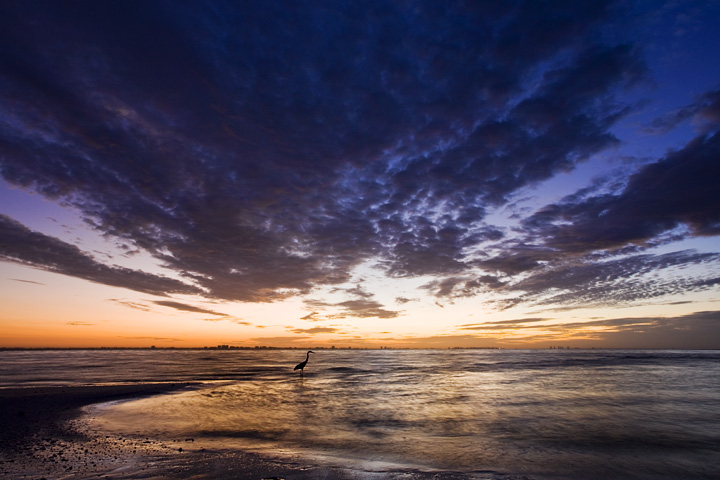I like to make photographs with the moon as an element – usually the moon of morning, the full moon setting or the waning crescent rising. A phenomenon that accompanies those days near the new moon or the full moon is low tide near dawn and dusk. There’s no moon near the horizon when there’s a high tide at sunrise.
I've attempted to photograph this driftwood on Lover’s Key several times over the past year or two. It’s a tough situation because the beach faces west and the light doesn’t reach the driftwood from behind the beach until well after sunrise. It would be helpful if there are clouds in the western sky, made dramatic by the light from the sun rising in the east. (I really should give it a try at sunset, but it just never seems to happen. I am by habit an early morning photographer. And I'm not enamored of crowded afternoon beaches.) To make the image in my mind’s eye, I needed a high tide.
Last Saturday, the moon was at first quarter and the high tide occurred just before sunrise. So I went to Lovers Key to give this driftwood another try. As I walked along the water's edge of Big Carlos Pass towards the beach, the sky didn't seem promising. The half moon peered down at me from a nearly clear sky. But as I rounded the point onto the beach at the mouth of the pass, I could see the faintest wisps in the west. Maybe Mother Nature would smile at me this morning. Imperceptibly, but somehow almost suddenly, the clouds began to gain character. Their writhing twisting shapes began to echo that of the gnarled wood. Working the composition with the ultra-wide 12mm lens with its 122° field of view, I realized that not only could I capture the high clouds moving in to cover the sky but the half moon, too. When the moon peeked between the fingers of cloud hiding its face, I made my picture.
Up until now I’ve only shown this photograph to a couple of civilians, both of whom pointed and exclaimed, “What’s that?” “Why, it’s the first-quarter moon,” I had to explain. So, what may be seen by some as an inexplicable speck, I see as a bonus. How do you see it?
Here’s a little lunar lexicon oddity I find amusing: At first quarter and third quarter, we see a half moon. Midway between the first and third quarters, the moon is full. Isn’t that when the half moon should occur?













































